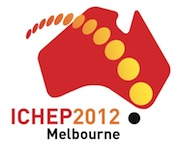Speaker
Dr
Darius Jurciukonis
(Vilnius University (LT))
Description
The Standard Model includes neutrinos as massless particles, but neutrino oscillations showed, that neutrinos are not massless. A simple extension of adding gauge singlet fermions to the particle spectrum allows normal Yukawa mass terms for neutrinos. Then smallness of the neutrino masses can be well understood within the seesaw mechanism (type I). After spontaneous symmetry breaking of the Standard Model gauge group one obtains a $(n_L+n_R)\times(n_+n_R)$ Majorana mass matrix $M_{\nu}$ for neutrinos. The mixing between the $n_R$ right-handed neutrino singlets and the neutral parts of the $n_L$ lepton doublets gives masses for the neutrinos which are of the size expected from neutrino oscillations.
The diagonalization of the mass matrix gives rise to a split spectrum consisting of heavy and light states of neutrinos given by$U^T M_{\nu}U=\mathrm{diag}(m^{light}_{n_L},m^{heavy}_{n_R})$. For the case $n_R=1$ we diagonalize the neutral fermion mass matrix with a rotation matrix $U$ determined by two complex angles, two masses, and two Majorana phases. For the case $n_R=2$ we parametrize the mass matrix with a rotation matrix $U$ determined by two complex angles, four masses, and four Majorana phases. In both cases we take $n_L=3$.
We calculate the 1-loop radiative corrections to the mass parameters of the neutrino sector of the seesaw extension of the Standard Model which produce mass terms for the neutral leptons. With these ingredients we plan to look at the process $W^{\pm}\to\tau^{\pm}+\nu\to h_1^{\pm}+h_2^{\mp}+h_3^{\pm}+\nu+\nu$. In the future we plan to apply our parametrization to study the $\tau$ polarization coming from the decay of a $W$ boson in the data of the CMS experiment at LHC and thus determine restrictions to the parameters of the neutrino sector.
Author
Dr
Darius Jurciukonis
(Vilnius University (LT))
Co-authors
Andrius Juodagalvis
(Vilnius University (LT))
Thomas Gajdosik
(Vilnius University (LT))
Tomas Sabonis
(Vilnius University (LT))
